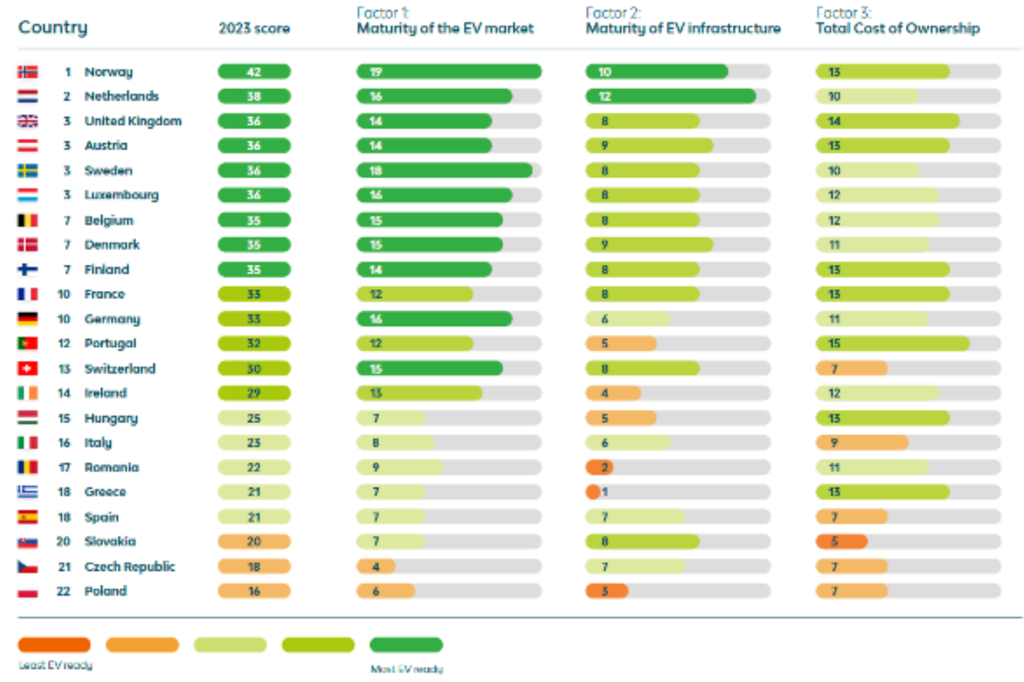Is The UK As Ready For EV’s As The Government Suggests?
Friday, 5. May 2023
The UK is among the top three European countries considered most ready for the switch away from internal combustion engine (ICE) vehicles to electric, new research suggests.
LeasePlan’s 2023 EV Readiness Index measures the preparedness of 22 European countries for electric vehicles (EVs) based on three factors: the maturity of the EV market, the maturity of EV infrastructure, and the total cost of EV ownership in each country.
The UK remained in the top 3 with an overall score of 36 out of 50, behind Norway and the Netherlands.
Maturity of the EV market increased by 19% (42 points) across Europe – with the UK increasing by 1 point – reflecting the overall improved penetration of EVs in European countries.
However, although EVs are still more affordable in most European countries compared to an ICE alternative, the total cost of ownership (TCO) maturity of EVs has slightly decreased by 6% (14 points). This is mostly driven by rising energy prices in 2022.
Alfonso Martinez, managing director of LeasePlan UK, said: “It is great to see a significant improvement this year in the UK – we are more ready than ever before for the shift to EV.
“It is now essential that we keep this momentum going: this year’s Index shows drivers in the UK are ready and willing to make the switch to electric, and we must keep pressure on both European and UK Government to ensure a robust public charging infrastructure is available to all drivers – including commercial vehicle fleets, incentives for switching like low Benefit in Kind rates, and OEMs that are able to keep pace with demand.”
LeasePlan’s report highlights how EVs held a 23% share of the UK’s car market is the highest scoring in terms of Government incentives.
The UK has also significantly improved charging infrastructure compared to the previous year with more than 71,000 public charge locations and over 13,000 fast charge locations per population. The second highest across Europe.
“The continued investment in charge points (including rural areas), electricity prices beginning to fall, and Government’s Budget that announced continued low rates of benefit in kind rates for EVs have all helped ensure electric remains cost comparative with a petrol or diesel equivalent,” continued Martinez.
“We want every single driver in the UK to be able to go electric, and while this year’s results are promising, we still have work to do.”

By Graham Hill thanks to Fleet News























